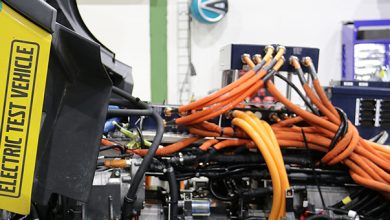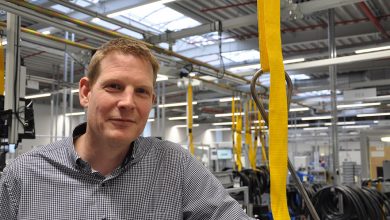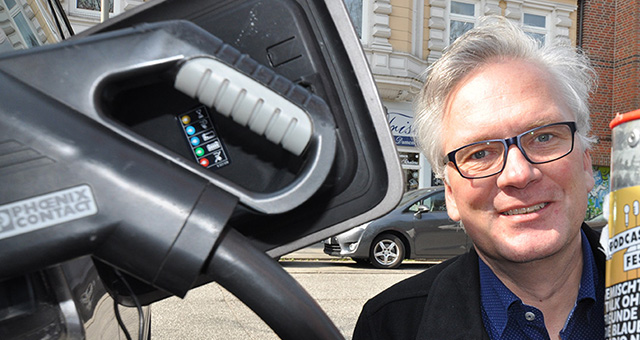The Netherlands is a nation on, sometimes in and sometimes even under water. Also in the metropolis at Amstel and Ij water plays an important role as an obstacle, but also as a traffic route.
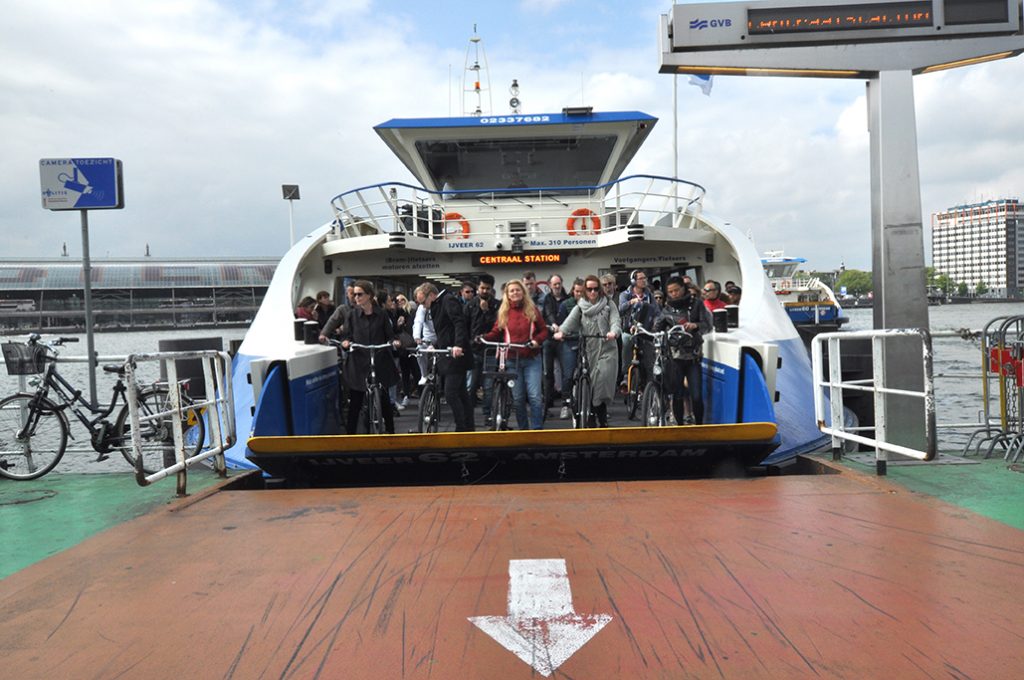
We, on the other hand, head off to the waterfront, to the Waterplein Oost terminal, where ferries are a part of urban mobility. In the midst of a crowd of bicycles and pedestrians, we board the floating vehicle.
And without any ticket stress. Of course we bought a day ticket. Which is surprisingly inexpensive. Because if you compare the price for a day ticket of the Amsterdam transport association GVB with the exorbitant parking garage fees usual there, then the investment is relativized immediately.
Carrying passengers neatly separated into Voetgangers (pedestrians) and Brumfietse (mopeds), the ferry crosses the Ij, the river on which Amsterdam is built. The ferry voyage lasts just a few minutes, and then the bow door opens and crowds of cyclists and pedestrians stream onto terra firma.
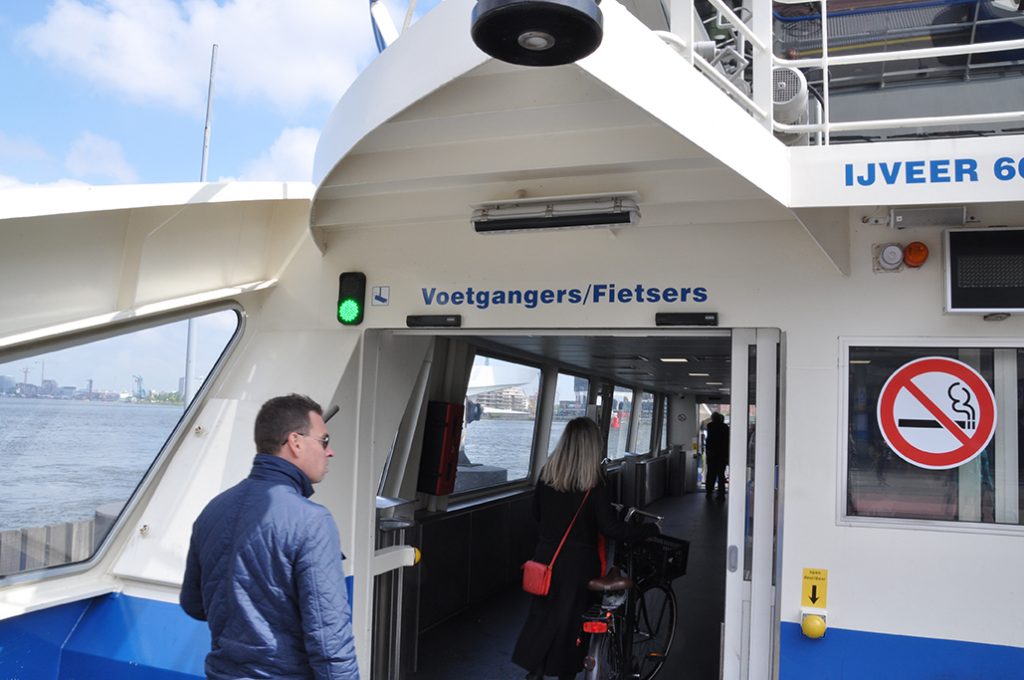
We belong to the foetgangers 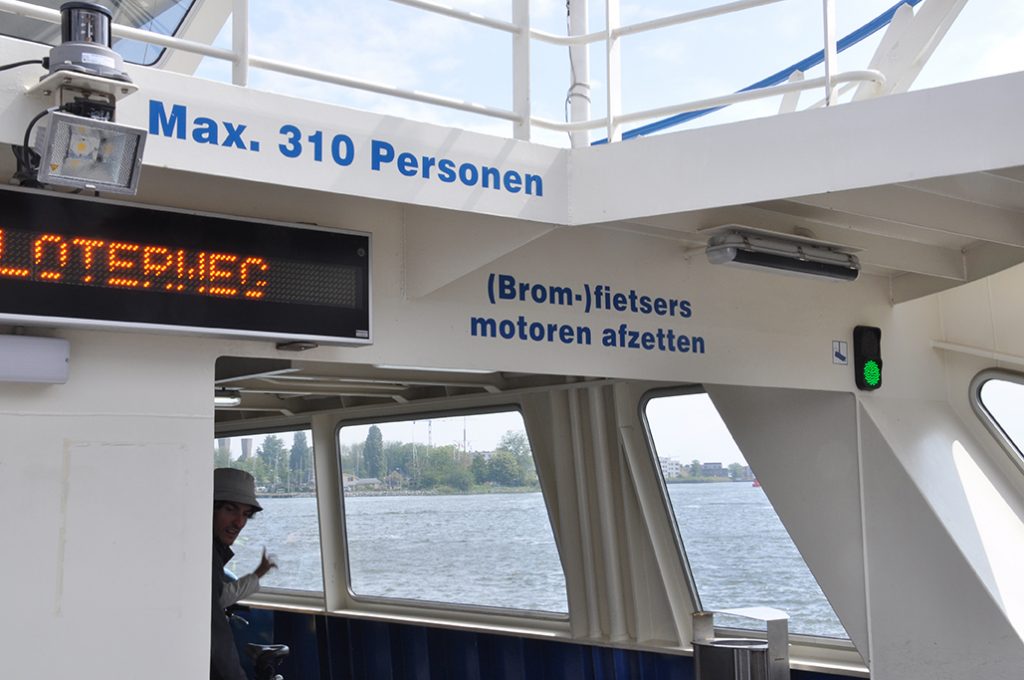
Bromfietsers are motorcycles, fiets are bicycles 
Daily transport business 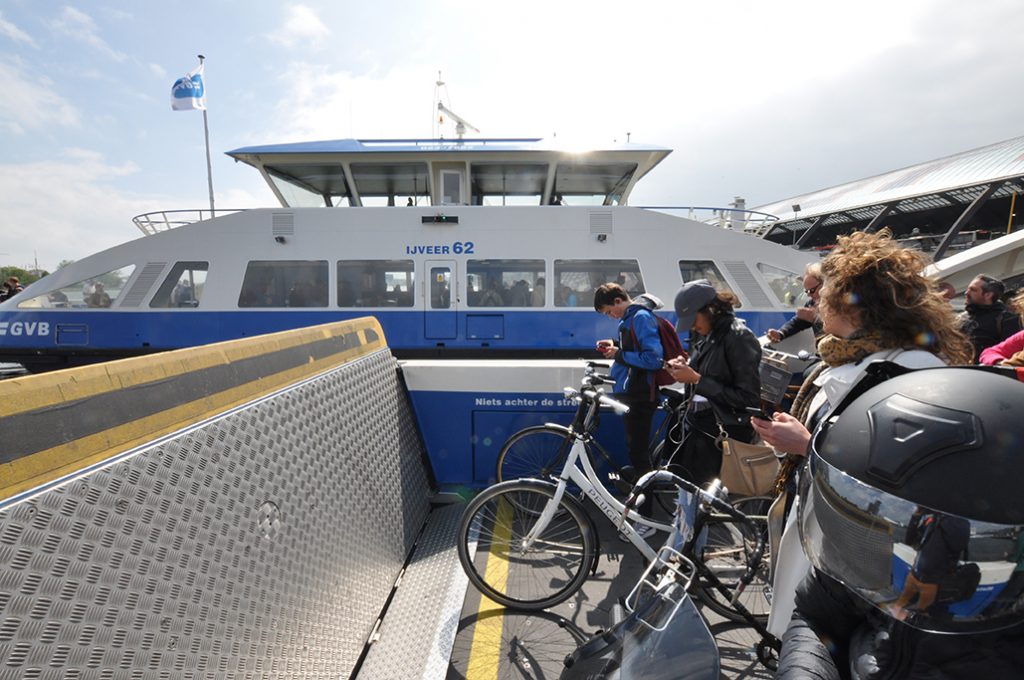
Mobiles are everywhere 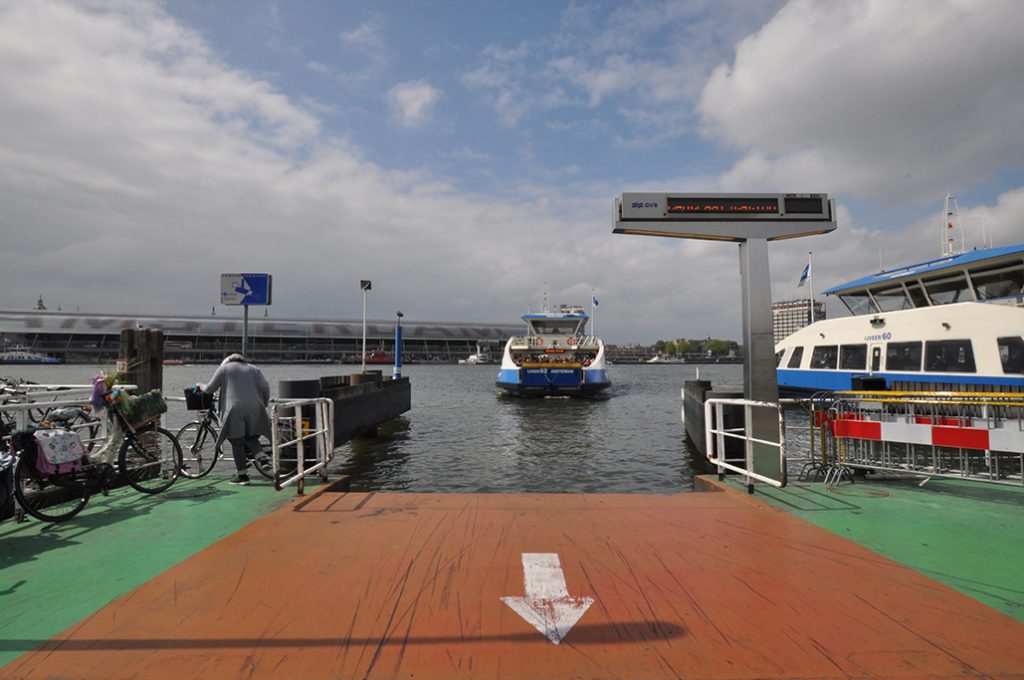
The ferry lines are perfectly integrated into the local transport system 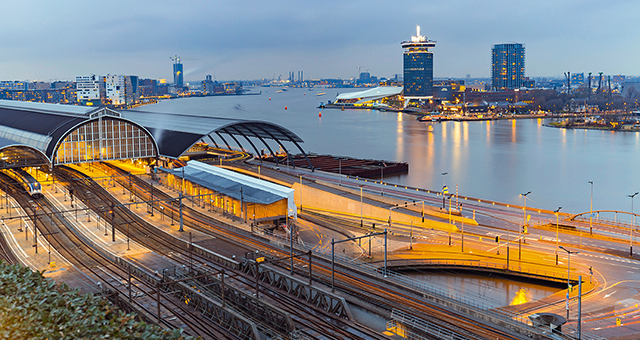
View on Waterplein, the water side of Centraal Station
Get the motorboats out of here!
We are on the lookout for charging stations for canal boats. Two-cylinder engines have been banned since 2017, and as of 2025, all combustion engines will be banned on the waterways of Amsterdam. This is a drastic step because more than 20,000 boats use these canals. A large number of these, however, are already powered by electricity alone.
In addition to inner-city shipping, Amsterdam is also a major cruise ship port where maritime cruise ships and river cruisers dock.
Facts Port of Amsterdam
Inner-city ferry lines: 7
Passenger boats in Amsterdam: 110 canal boats (tourism)
Passengers: more than 3.8 million/year
Fixed houseboats: 2.500
Houseboat inhabitants: 5.500
Cruise ships Sea: 140 annually
Cruise ships River: 1700 annually

